11 Hidden Spots to Enter the Underworld
A world tour of the gateways of Hell.

Hades. Naraka. Guinee. Xibalba. Though names may differ from one set of teachings to another, almost every religion on the planet features the concept of an underworld—a place to which the souls of the dead are banished, for penance or punishment.
So in honor of 31 Days of Halloween, we mined the Atlas for the various purported entrances to the netherworld, scattered across the globe, ranging from Mayan caves to Japanese swamps.
But remember: If you should decide to visit any of these sites, it should be noted by way of a disclaimer that we take no responsibility whatsoever for the consequences of your attempts to open an infernal portal.
You have been warned…
1. Cape Matapan Caves
CAPE MATAPAN, THE MANI, GREECE
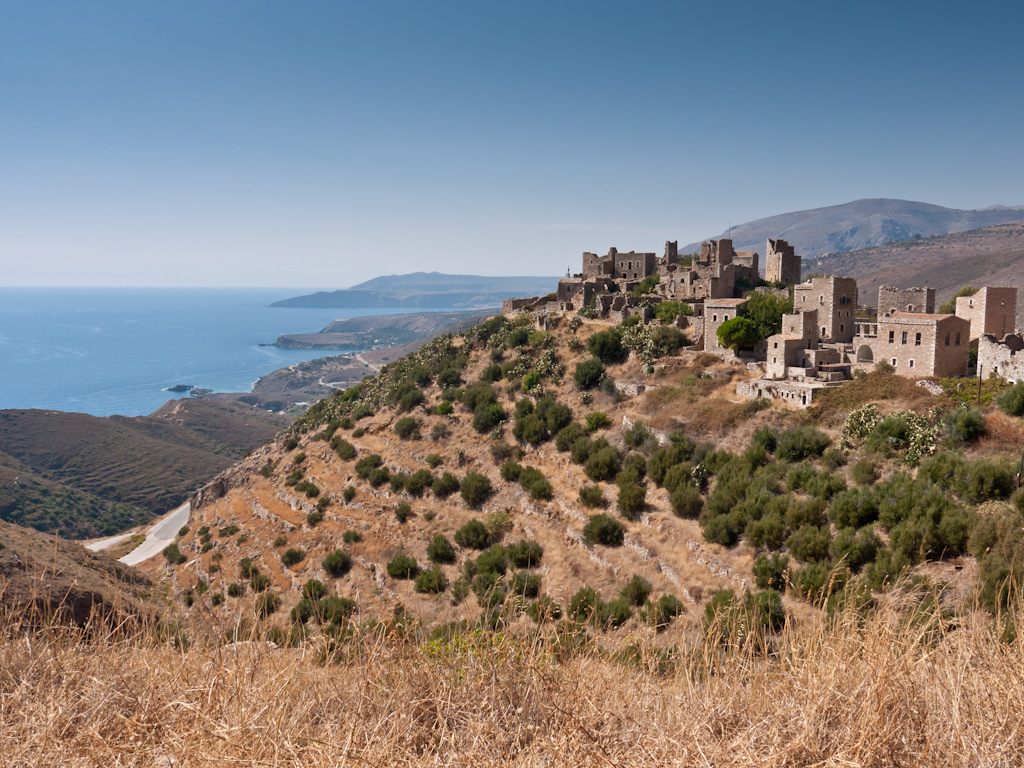
The Village of Vathia on Cape Matapan. (Photo: Charles Nadeau/CC BY 2.0)
Our first gateway is an entrance to the Classical hell: the Cape Matapan Caves which are located on the southernmost tip of the Greek mainland. Cape Matapan—also known as Cape Tainaron, or Tenaro—is situated on the end of the peninsula known as the Mani. The caves open at sea-level into a cliff face beneath the headland, the exact point marked by the ruins of a Spartan temple above.
This was one of several entrances that the Ancient Greeks ascribed to Hades, the Kingdom of the Shades. Others were to be found at the Necromanteion of Ephyra on the River Acheron, as well as at Alepotrypa: another, smaller cave network on the Mani.
When Orpheus travelled down to Hades to rescue Eurydice, it was said to be through the cave on Cape Matapan; Hercules likewise used these caverns when he made his own descent to the underworld. The geographer Pausanias identified Cape Matapan as the point where, supposedly, “Cerberus was brought up from Hades by Herakles” (Description of Greece, 2nd century AD).
Another story related by Pausanias linked to the picturesque cape relates to the poet Arion, who escaped from pirates to be carried ashore by a pod of dolphins. A bronze statue of the poet riding a dolphin stands on the crest of the cape, not far from the ruins of a temple raised in honor of the sea god, Poseidon.
The caves at Matapan can still be entered by visitors, although a boat is required to pass through the watery mouth of this particular hellgate.
2. Hekla
ICELAND

Detail of Abraham Ortelius’ 1585 map of Iceland showing Hekla in eruption. (Photo: Abraham Ortelius/Public Domain)
Our next location, the imposing stratovolcano known as Hekla, can be found in the southern mountains of Iceland… a fiery pit of lava that has long been associated with the fiery pit of Christian tradition. In the Middle Ages, Cistercian monks travelled far and wide across Europe carrying tales of “Hekla Fell.”
In 1180, the monk Herbert de Clairvaux named the volcano in his book, Liber De Miraculis. He wrote: “The renowned fiery cauldron of Sicily, which men call Hell’s chimney […] that cauldron is affirmed to be like a small furnace compared to this enormous inferno.”
The monk Benedict named Hekla as the “eternal prison of Judas” in his poem about the voyages of Saint Brendan from 1120. Later, in 1341, the medieval Icelandic manuscript Flatey Book Annal described large birds that were reportedly seen flying inside the fiery crater; these were believed to be the souls of the damned.
There have been more than 20 serious eruptions recorded since 874 AD, although in recent years Hekla has been somewhat more peaceful. Most superstitions regarding the volcano died out by the 19th century; nevertheless, local folklore still tells of witches who gather around the volcano’s peak each Easter.
3. Fengdu City of Ghosts
CHONGQING, CHINA

The Ghost King. (Photo: Britrob/CC BY 2.0)
An altogether quite different hellgate can be found in the heart of China—a city of ghosts with close ties to Naraka, the underworld of Chinese mythology. Visitors to Fengdu are treated to a rare glimpse into the workings of hell.
This 2,000-year-old settlement is located on Ming Hill, at the northern end of the Yangtze River. Founded during the Han Dynasty (206 BC-220 AD), the Fengdu “City of Ghosts” bases its heritage on the story of two renegade officials who fled here to escape the Emperor. Their names, Yin and Wang, were later adapted to form a title for one of the rulers of hell: “Qinguang Wang Jiang.”
Fengdu is famous for its striking, traditional architecture and elaborate craftsmanship. Its streets and squares are filled with statues of ghosts and demons, as well as poignant reminders of the punishments that await the wicked in the next life. Most of the city’s landmarks are linked to hellish themes: “Ghost Torturing Pass,” “Nothing-to-be-Done Bridge,” and “Last Glance at Home Tower.”
Perhaps most striking of all though, is “The Ghost King”—a giant, carved face looking down on the city from a rock face. Measuring 138 meters (about 452 feet) tall and 217 meters (about 712 feet) across, Fengdu’s “Ghost King” is the largest rock sculpture in the world.
4. Lacus Curtius
ROME, ITALY
Lacus Curtius in the Roman Forum. (Photo: MM/CC BY-SA 3.0)
To locate our next gate, we travel from ancient China to ancient Rome.
Each year thousands of tourists flock to the Roman Forum, and this well-preserved landmark is one of Rome’s most popular attractions. Relatively few of Rome’s visitors are aware, however, of the story behind the small stone well that stands at the Forum’s heart; once believed to serve as an entrance to the underworld.
Lacus Curtius, or the “Lake of Curtius,” takes its name from an ancient Roman legend. The historian Livy wrote of a time when an oracle foretold the fall of Rome. The message, “quo plurimum populus Romanus posset,” warned that the city would crumble unless it was prepared to sacrifice that which it held most dear. Meanwhile, a chasm opened in the center of the forum to accept that offering.
Interpreting this riddle to mean Rome’s soldiers, centurion Marcus Curtius sacrificed his own life—donning full armor before riding his horse into the pit. The chasm closed over his head, and Rome was saved.
While other myths link the Lacus Curtius to the Sabine horseman known as Mettius Curtius (or alternatively to the Roman consul, Gaius Curtius Philon), the true origins of the pit have been long since lost to the mists of time. Livy holds that the story of Marcus Curtius is the most plausible of the myths—despite its blatant disregard for the laws of physics.
The stone relief visible in the image above is a modern replica of an ancient plaque, depicting Curtius mounted upon his horse and prepared for sacrifice.
5. Actun Tunichil Muknal Cave
TAPIR MOUNTAIN NATURE RESERVE, BELIZE
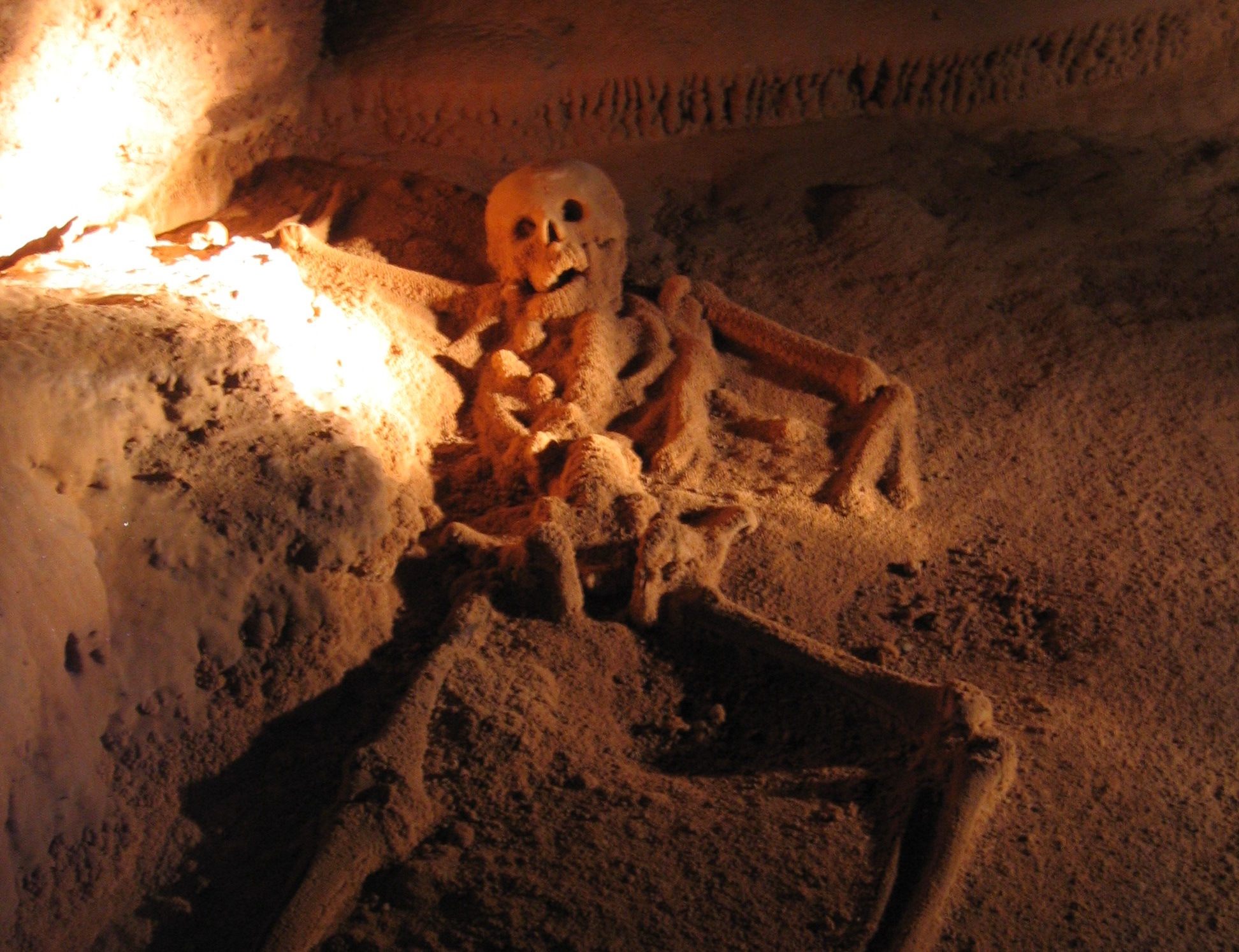
Remains of the “Crystal Maiden” Mayan sacrifice in Actun Tunichil Muknal cave. (Photo: Peter Andersen/CC BY-SA 3.0)
There is a cave network located in modern-day Belize, which the Mayans believed was an entrance to their underworld: Xibalba.
The name Actun Tunichil Muknal translates as “Cave of the Crystal Sepulchre.” Extensive research has linked the site, located in the Tapir Mountain Nature Reserve, to ancient Mayan legends. These stories described rivers of blood and scorpions, and a vast subterranean labyrinth ruled over by the Mayan death gods, the demonic “Lords of Xibalba.”
Since their rediscovery in 1989, the caves of Actun Tunichil Muknal have become a popular destination for explorers. There are numerous landmarks that make this network particularly interesting, including a vast chamber of stalactites known as the “Cathedral.”
Amongst scattered fragments of pottery and bone, one of the more notable discoveries is the skeleton of an 18-year-old girl. Believed to have been ritualistically murdered in the cave as a sacrifice to the Death Gods, she has been nicknamed the “Crystal Maiden”; over the 1,000 years since her death, her bones have calcified to create a shimmering, crystal effect.
Other human remains found in the caves were believed to have been sacrifices given to the rain god Chac, and many of these show similar signs of calcification (although none are quite so perfectly preserved as the Crystal Maiden). Another theory suggests that the various dead may have been suspected of witchcraft—possibly suffering from physical or mental ailments, their unburied corpses were sealed within the hell gate in hopes that their spirits might be forever trapped.
6. The Gates of Guinee
NEW ORLEANS, LOUISIANA
The tomb of voodoo priestess Marie Laveau — a possible gate? (Photo: Lucid Nightmare/CC BY-ND 2.0)
According to Voodoo mythology, the newly dead are sent to a kind of purgatory before travelling to meet their ancestors in the “deep waters.” Known as Guinee, this twilight realm is presided over by the notorious loa who goes by the name of Baron Samedi.
There are tales of Voodoo practitioners opening the Gates of Guinee to reclaim the souls of the dead; souls in this lost land are also considered to be at high risk from Hoodoo magicians, who have the power to reanimate them as zombies.
While some followers of Voodoo interpret the seven gates as a spiritual metaphor, others believe them to exist in the physical realm. One of these stories locates the gates in New Orleans. To enter Guinee, it is said that one must open the seven gates in the correct order. Each successive gate is presided over by one of the loa of death, the “Guédé,” who must be appeased with the appropriate offerings.
Although the exact locations of the gates have never been disclosed, there have been oblique suggestions over the years that a clue may lie in the “veve,” or summoning sigil of Baron Samedi himself. Appearing as a crucifix surmounted by seven stars, the symbol might indeed serve as a map of sorts; once aligned over the crossroads of Canal Street and Basin Street in the city’s French Quarter, the stars of the veve seem to fall on notable surrounding cemeteries.
7. Pluto’s Gate
DENIZLI PROVINCE, TURKEY

Ruins of the Ploutonion at Hierapolis. (Photo: Mach/CC BY-SA 3.0)
The next hellgate on our list was discounted for thousands of years as a work of fiction; however, the Ancient Greek site known as Pluto’s Gate, or the “Ploutonion,” has only recently been rediscovered in Turkey.
An archaeological dig revealed the remains of an ancient temple situated on a thermal spring, long believed to have been a gateway to hell. This well-documented Temple of Pluto disappeared from records sometime around the 6th century.
Amongst the distinguishing features of this particular gate are the toxic fumes which waft out from tunnels beneath. In times of antiquity these were often inhaled by the priests of Pluto, promptly sending them into hallucinogenic trance states. Writing at some time around the year 0 AD, the Greek philosopher Strabo claimed that, “any animal that passes inside meets instant death.” Even now, the poisonous vapors claim the lives of birds that fly or nest too close to the ruins.
8. St. Patrick’s Purgatory
LOUGH DERG, IRELAND

St. Patrick’s statue, the purgatory on Station Island in the background. (Photo: Kenneth Allen/CC BY-SA 2.0)
Along with Iceland’s Hekla, this next site serves as an entrance to the Hell of Christian scripture. Founded in the 15th century, St Patrick’s Purgatory is a small monastery located on Ireland’s Station Island. According to the story, St. Patrick himself once visited the island—whereupon Jesus sent him visions of the torments of hell. The cave where the saint received these diabolical hallucinations was later confirmed to be an entrance to Satan’s pit, and a monastery was duly built to plug the hole.
The cave itself has been sealed ever since October 25, 1632. According to the accounts of pilgrims prior to that date, it takes the form of an enclosed pit, reached at the end of a long, narrow, and slowly descending cave. Experts have suggested that even before the believed arrival of St. Patrick, the cave may have been used as a site for prayer and spiritual healing.
Many believers travel to Station Island annually, to undertake a three-day contemplation on the nature of Hell. With pilgrims expected to make the entire trip barefoot, a local website describes the pilgrimage as, “the toughest in all of Europe, perhaps even in the whole Christian world.”
9. Chinoike, Jigoku
BEPPU CITY, JAPAN

Chinoike Jigoku of Beppu Jigokumeguri. (Photo: 663highland/CC BY 2.5)
In Far East Asia, our next gateway takes the primordial form of a bubbling pool of hellish red slime… now featuring a visitor’s center, a health spa, and gift shop.
Beppu City in Japan is home to a series of nine hot springs, each one flowing in a different colour and composition. The springs have been mentioned in Buddhist texts dating back as early as 700 AD, and nowadays the mud from these pools can be bought as a soothing skin cream.
However, at the heart of this idyllic spa there lies a dark legend with the pool known as Chinoike Jigoku, or the “Bloody Hell Pond,” the rich color coming from natural iron oxide deposits on the pond bed. Chinoike Jigoku is presided over by a collection of sculpted demons, some carved into the rocks themselves. The Buddhists likened the appearance of the pool to the bubbling pits of hell, and in times gone by the Bloody Hell Pond – reckoned at around 78 degrees Celsius—was sometimes used to torture prisoners before boiling them alive.
10. The Seven Gates of Hell
HELLAM TOWNSHIP, PENNSYLVANIA
The Susquehanna River just east of Hellam Township. (Photo: Nicholas/CC BY 2.0)
Meanwhile, in a quiet little backwater of York, Pennsylvania, one finds Hellam Township—by all accounts a pleasant, friendly town, and unremarkable, were it not for the rumored existence of a gateway to Hell in a nearby forest.
There are a number of contradictory stories explaining the “Seven Gates” of Hellam Township. One of the better-known myths ties them to an insane asylum on the town’s outskirts, which supposedly burnt to the ground in the 19th century. According to this particular legend, the inmates—most of them criminally insane, of course—escaped, only to be recaptured using a series of tall fences and secure gates. Many were beaten to death by guards in the process.
An alternate story tells of a doctor who once lived in the town. This man (by some accounts a Satanist, by others merely eccentric) was said to have designed a series of strange gates on his land, which followed a winding path running deeper and deeper into the forest. Where stories agree, is that those who pass through the gates in order will find themselves transported straight to the underworld. Only the first gate is visible by daylight, situated in woodland just off Hellam’s Trout Run Road.
11. Cave of the Sibyl
NAPLES, ITALY
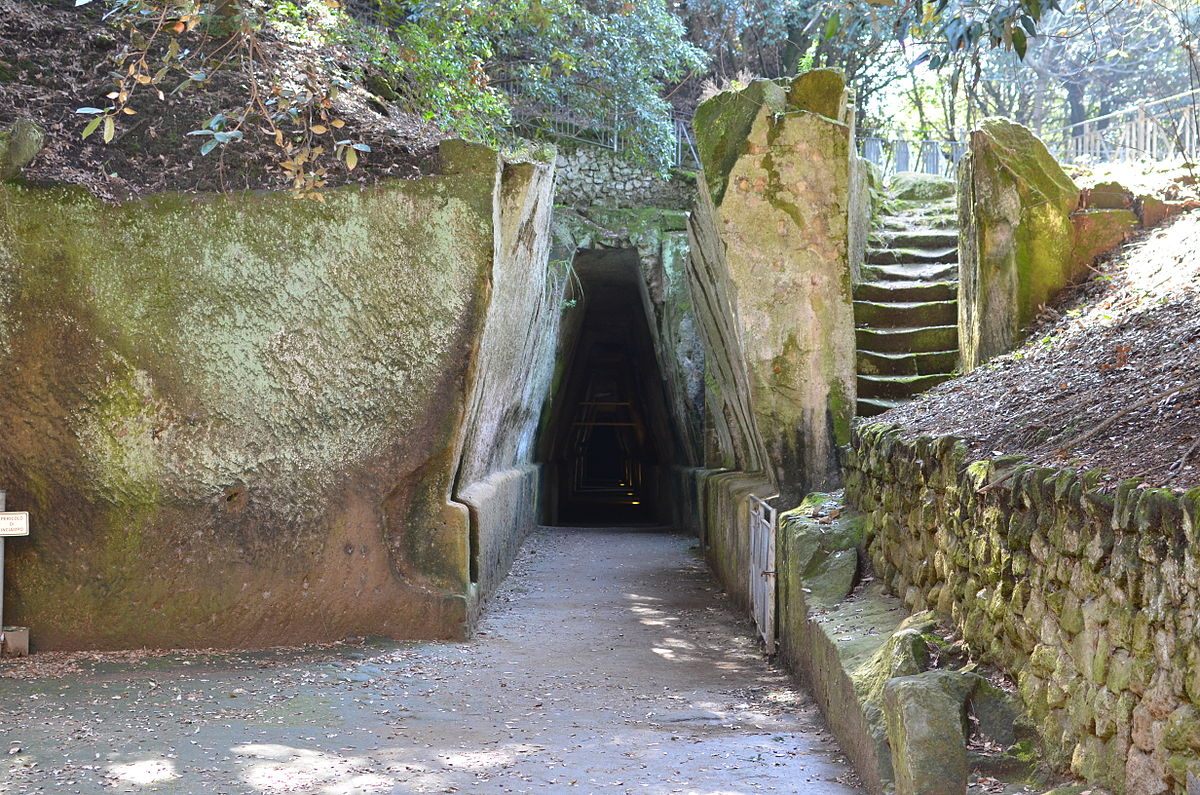
Entrance to the Cave of the Sibyl. (Photo: AlexanderVanLoon/CC BY-SA 3.0)
Our final gateway to Hell is also perhaps the oldest on this list; a diabolical portal well-known to the ancient Romans, and first described in writing over 2,000 years ago. In his classic work The Aeneid, Virgil describes a cave with a hundred entrances that led deep beneath the earth—and as far as the underworld itself.
“The gates of hell are open night and day;
Smooth the descent, and easy is the way…”
Virgil wrote his masterpiece in the 1st century BC, and it tells the story of the Trojan hero Aeneas. It was in this cave—located in Cumae, a Greek settlement close to modern-day Naples—that Aeneas encountered the Sibyl. The Cumaean Sibyl was an oracle, a fortune-teller, and priestess, whose sung prophecies echoed endlessly around the hollow caverns. At the age of 700 she served as a guide to Aeneas, as he descended through the caves to the Hell below.
Explorers in the Middle Ages searched in vain for Virgil’s “Antro della Sibilla.” It wasn’t until 1932 however, that archaeologist Amedeo Maiuri (fresh from his excavations at Pompeii) finally discovered this well-documented entrance to the netherworld. Now incorporated into the Cumae Archaeological Site, it is possible for tourists to visit the Cave of the Sibyl for themselves; and to experience those haunting echoes described so many years ago by the poet Virgil:
“As many voices issue, and the sound of Sybil’s words as many times rebound.”

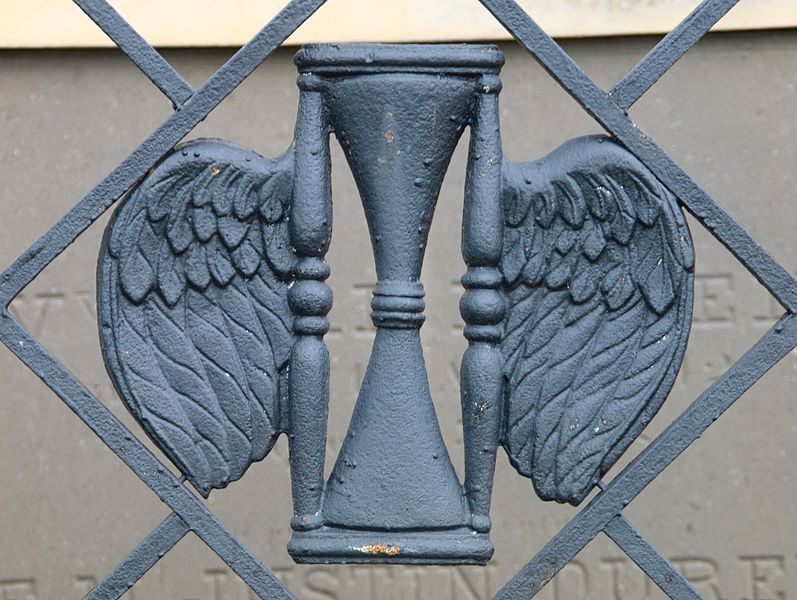


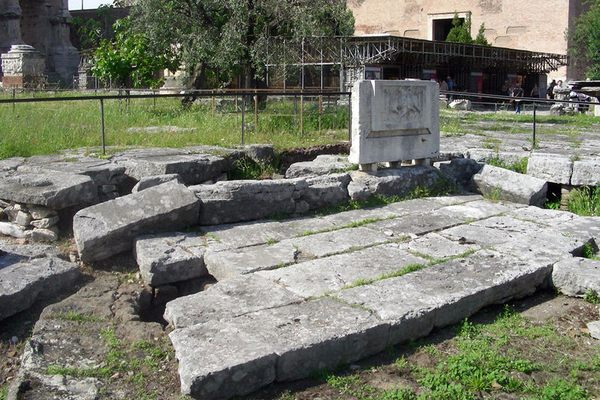

















Follow us on Twitter to get the latest on the world's hidden wonders.
Like us on Facebook to get the latest on the world's hidden wonders.
Follow us on Twitter Like us on Facebook